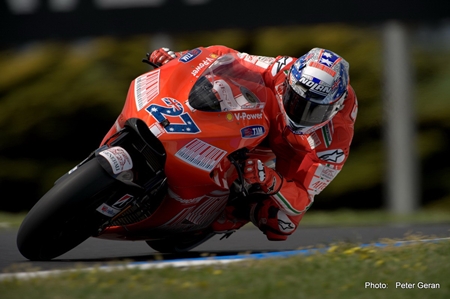For many years I resisted Auto-Focus (AF) cameras. I always felt that I could focus manually faster than the AF could, and what was even more important, I knew what were the important items in the frame – the electronic “magic eye” did not.
However, like so many things in life, I have had to change my thoughts on AF. Quite frankly, today’s AF is better than me. Now that I need glasses as well, I am unsure whether I have the focus ‘sweet spot’ correctly, whilst my AF does, with a comforting ‘beep’.
 Super sharp pic by Australian photographer Peter Geran.
Super sharp pic by Australian photographer Peter Geran.
However, since almost all new cameras are AF, the following tips will try and ensure that you do get the sharp results that you think you’re going to get from the important AF feature.
There are unfortunately many situations where the magic AF eye just cannot work properly. If there is no contrast in the scene, then the AF will not work. If you are trying to focus in a “low light” situation then the AF will “hunt” constantly looking for a bright area. When trying to shoot through glass or wire mesh the AF can become totally confused as well. No, while AF is now almost 100 percent universal, it is still not 100 percent foolproof.
One of the reasons for this is quite simple. The camera’s magic eye doesn’t know exactly what subject(s) you want to be in focus and picked the wrong one! The focussing area for the AF system is a small circle or square in the middle of the viewfinder, so if you are taking a picture of two people two meters away, the camera may just focus on the trees in the far distance that it can see between your two subjects. Those trees are two km away, so you get a shot with the background sharp and the two people in the foreground as soft fuzzy blobs.
What you have to do is use the “hold-focus” (sometimes called “focus lock”) facility in your camera. To use this facility, compose the people the way you want them, but then turn the camera so that one person is now directly in the middle of the viewfinder, in the AF focus square. Gently push the shutter release half way down and the AF will “fix” on the subject. Generally you will get a “beep” or a green light in the viewfinder to let you know that the camera has fixed its focus. It will now hold that focus until you either fully depress the shutter release, or you take your finger off the button. So keeping your finger on the button, recompose the picture in the viewfinder and shoot. The people are now in focus, and the background soft and fuzzy, instead of the other way round.
So what should you do in the other situations when the AF is in trouble? When all else fails, turn it off and focus manually! Sometimes, in the poor light it is possible to shine a torch on the subject, get the AF fixed on the subject and then turn off your torch and go from there. But this is only when you cannot turn the AF off!
Another focussing problem is when photographing a moving subject. When say, for example, you are attempting to shoot a subject coming rapidly towards you, the AF is unable to “keep up” with the constantly moving target. The answer here is to manually focus at the point where you want to get the photograph and then wait for the subject to reach that point. As it gets level with the predetermined point, trip the shutter and you have it. A sharply focussed action photograph.
Another super tip from the photographic studios of the glamour photographers – when making a portrait shot, focus on the eyes, nowhere else. Very, very carefully focus on the eyelid margins and you will have a super shot, no matter how shallow your depth of field may be.
Finally, remember that AF is merely an electronic ‘aid’, you have to make sure it is helping you get better pictures. Look carefully at what the pre-view screen is showing you.




